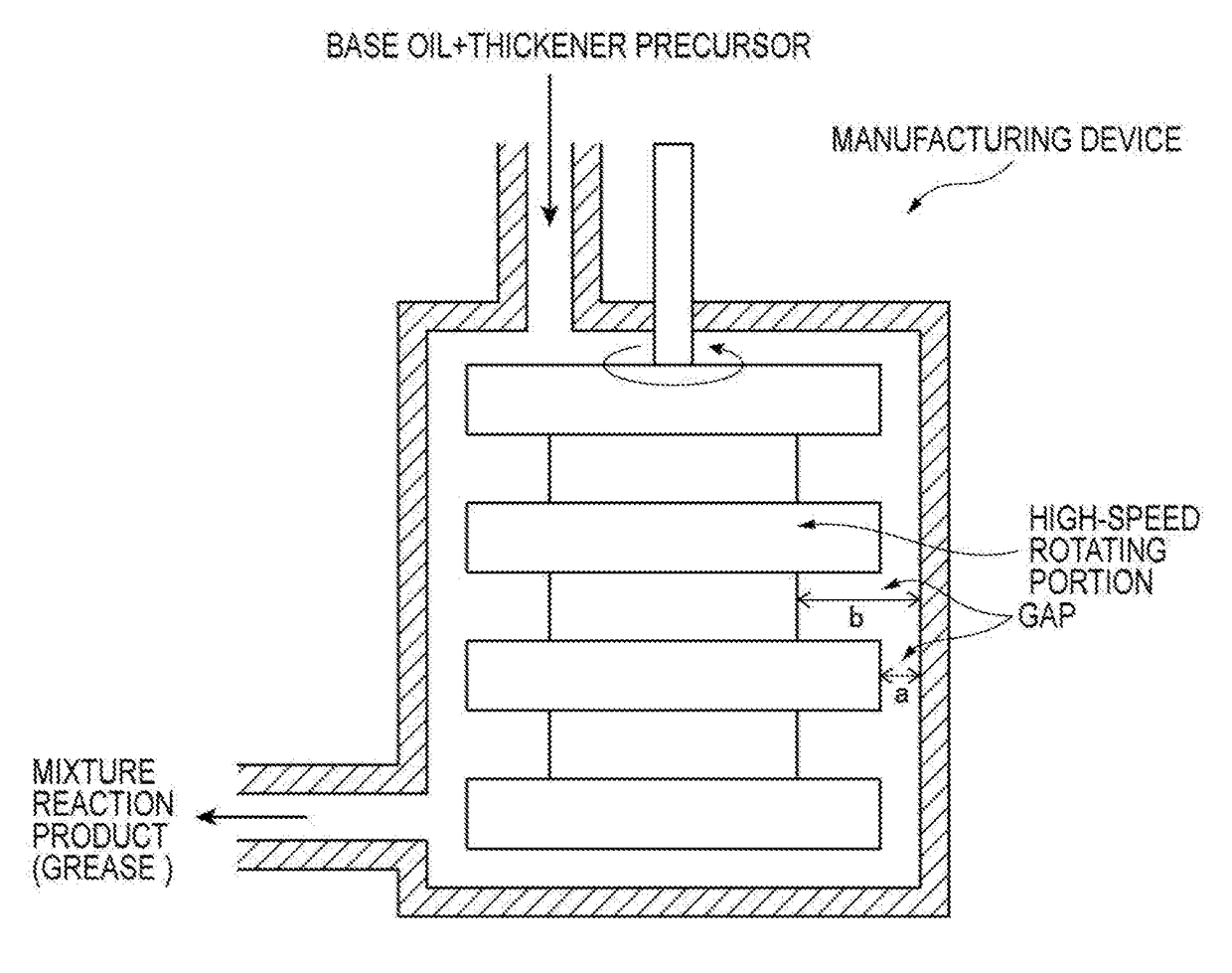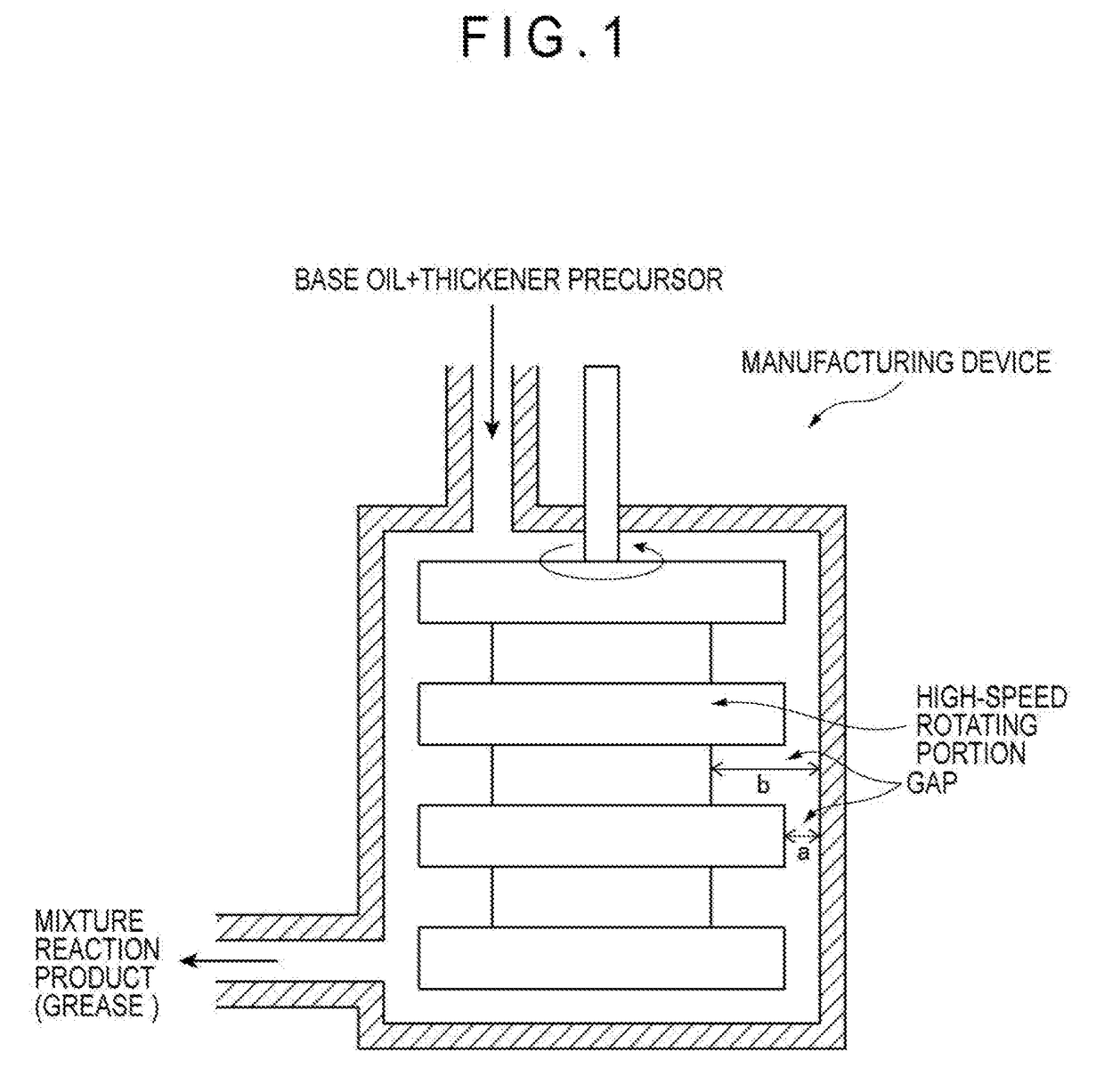Grease and method for manufacturing grease
- Summary
- Abstract
- Description
- Claims
- Application Information
AI Technical Summary
Benefits of technology
Problems solved by technology
Method used
Image
Examples
first exemplary embodiment
[0028]The inventors have examined a volumetric-based arithmetic mean particle size of particles dispersed in a grease to find that the volumetric-based arithmetic mean particle size relates to the acoustic properties of the grease. The first exemplary embodiment has been achieved based on the above finding.
[0029]The grease of the first exemplary embodiment (sometime simply referred to as “the present grease” hereinafter) contains a base oil and a thickener, and satisfies the following formula (1), where A (unit: μm) is the volumetric-based arithmetic mean particle size of particles contained in the grease measured using laser diffraction / scattering method.
A≦3 (1)
[0030]The present grease will be described below in detail.
Material for Manufacturing Grease
[0031]The base oil used in manufacturing the present grease is not particularly limited, but may be any mineral base oil and synthetic base oil typically usable for manufacturing a grease. The mineral base oil and synthetic b...
second exemplary embodiment
[0065]In the description of the second exemplary embodiment, the components identical with those of the first exemplary embodiment, for instance, will be designated by the same name to omit or simplify the explanation thereof.
[0066]The inventors found that urea molecules and a bundle (fiber structure) were formed within an extremely short time after an isocyanate solution and an amine solution were mixed. The inventors estimated that a nonuniform structure such as a thick bundle and a large lump was formed because a low shear rate was non-uniformly applied when the isocyanate solution and the amine solution are mixed in a typical manufacturing method. The inventors focused attention on this point and found that the size of the lump could be made smaller than one formed in the typical manufacturing method by applying high-velocity shear to one of the isocyanate solution and the amine solution, subsequently mixing the other of the isocyanate solution and the amine solution and turning...
third exemplary embodiment
[0092]In the description of the third exemplary embodiment, the components identical with those of the first and second exemplary embodiments will be designated by the same name to omit or simplify the explanation thereof.
[0093]A urea grease (sometimes referred to as “the present grease” hereinafter) according to the third exemplary embodiment is prepared by shearing a mixture containing a monoamine compound, which is at least one of an aliphatic monoamine and an aromatic monoamine, and a diisocyanate compound at a shear rate of 102 s−1 or more to cause a reaction. The present grease will be described below in detail.
[0094]The mixture of the monoamine compound, which is at least one of the aliphatic monoamine and the aromatic monoamine, and the diisocyanate compound is prepared by putting a solution containing the monoamine compound in a base oil and a solution containing the diisocyanate compound in a base oil into a reactor.
[0095]The present grease is a urea grease whos...
PUM
 Login to View More
Login to View More Abstract
Description
Claims
Application Information
 Login to View More
Login to View More - R&D
- Intellectual Property
- Life Sciences
- Materials
- Tech Scout
- Unparalleled Data Quality
- Higher Quality Content
- 60% Fewer Hallucinations
Browse by: Latest US Patents, China's latest patents, Technical Efficacy Thesaurus, Application Domain, Technology Topic, Popular Technical Reports.
© 2025 PatSnap. All rights reserved.Legal|Privacy policy|Modern Slavery Act Transparency Statement|Sitemap|About US| Contact US: help@patsnap.com



